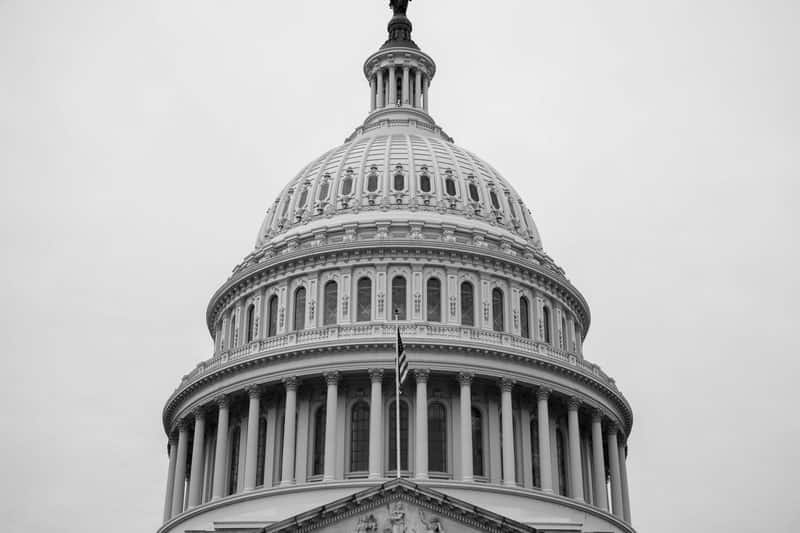
Kevin Vazquez is a staff attorney at the International Brotherhood of Teamsters. He graduated from Harvard Law School in 2023. The opinions he expresses on this blog are his own and should not be attributed to the IBT.
According to data released by the Bureau of Labor Statistics on Friday, the rate of unionization in the United States increased for the first time in more than 10 years in 2020, to 10.8% from 10.3%, even as the total number of unionized workers declined by more than 300,000. Taken together, these two numbers demonstrate that unions have been able to effectively prevent their members from being fired at the same rate as non-unionized workers during the pandemic. Union membership in the United States has been, of course, declining for decades, and this does little to reverse that trend. Nonetheless, 2021 is poised to be a hopeful year for the labor movement, which has become more visible and energetic in many ways during the pandemic. President Biden has also pledged to be a pro-union president, and his early moves – including firing Peter Robb on Wednesday – have been promising.
On Saturday, the 1,400 striking workers at Hunts Point Market in the Bronx, the largest wholesale produce market in the country, ended their seven-day effort after ratifying a new three-year contract that will raise hourly wages by nearly $2, the largest pay increase in over 30 years. The workers, members of Teamsters Local 202, demanded better wages for continuing to put their health at risk to keep New York City supplied with fresh fruits and vegetables during the pandemic. Hunts Point Market is responsible for about 60% of total produce sales in the city, and at least six workers have died and roughly 300 have gotten sick after contracting the virus since the outbreak began. The weeklong strike, which was joined by Rep. Alexandria Ocasio-Cortez on Inauguration Day and received support from other Democrats, was the first in the market since 1986. Hunts Point used temporary workers and private security forces to keep the market operational during the strike, and several striking workers were arrested during the picket, but management eventually capitulated to the workers’ demands.
The strike raised difficult questions about the relationship between the importance of “essential workers,” such as those working in food and agriculture production and distribution, grocery stores, manufacturing, or public transit, to the continued functioning of our society, and the treatment, wages, respect, and job security – or lack thereof – that they often receive in return for their critical work. Activists, labor groups, and other organizations have frequently asked why workers deemed “essential” to the survival of our society, who have been forced to continue showing up for work throughout the duration of the pandemic, and thousands of whom have died, are also among the lowest-paid, least-secure, and worst-treated workers in the country. The difference is especially stark when one compares the relative compensation of workers who have been able to work remotely, sparing themselves from the dangers of the virus, to those, disproportionately minorities, who have been required to continue showing up for work, putting their own health and the health of their loved ones at risk. It is certainly curious that those workers deemed most critical to the smooth functioning of our society are treated and paid the worst, and these questions remain unresolved.
Perhaps in response to this societal contradiction, or perhaps in response to the growing pressure exerted by the labor movement, President Biden issued an executive order on Friday that will allow workers to claim unemployment benefits if they quit their job because of unsafe working conditions, in addition to an order increasing the amount given to families receiving weekly benefits through the Supplemental Nutrition Assistance Program (SNAP). President Biden has also called for the federal minimum wage to be raised from $7.25 to $15 an hour, echoing a signature campaign plank of his one-time rival for the Democratic presidential nomination, Sen. Bernie Sanders. According to the Department of Labor, such a raise would lift the wages of 17 million workers, disproportionately minorities and women, and it would bring 1.3 million above the poverty line. The federal minimum raise was last raised – by 30 cents an hour – in 2009, more than a decade ago, the longest period without a raise since it was created in 1938. House Democrats are preparing to reintroduce the “Raise the Wage Act,” which passed in January 2019 but was killed by Republicans in the Senate later that year, in the coming weeks.
The specter of an increase in the minimum wage has raised a familiar chorus from conservative detractors, who claim that it will lead to job loss and ultimately hurt those it is intended to help. The impact of a minimum wage increase is one of the most well-studied subjects in the field of economics, and there is a growing body of evidence demonstrating that any potential job loss caused – which is often negligible – is more than offset by the average gains made by low-income workers, including those who previously earned hourly wages higher than the minimum wage. In her confirmation hearing before the Senate on Tuesday, Treasury Secretary nominee Janet Yellen voiced her support for the increase, saying that the economic literature has demonstrated that it would have a “minimal” impact on job loss and lead to overall economic gains. Interestingly, if the minimum wage rose with productivity growth since 1968, it would be more than $24 an hour today – which stands in sharp contrast to the $7.25 that it is in reality, and even to the $15 hourly that is being proposed.
Finally, the Huffington Post has reported that a seemingly innocuous memo issued by President Biden on his first day in office entitled “Modernizing Regulatory Review,” buried beneath a series of more visible executive orders and high-profile actions, has the potential to dramatically alter the nation’s regulatory landscape and could lead to regulations targeting income inequality, climate change, and other pressing social and economic issues. The order could transform the way in which the Office of Information and Regulatory Affairs (OIRA) analyzes newly proposed regulations. Traditionally, progressive activists have criticized OIRA’s cost-benefit analyses for ignoring social and environmental costs which are difficult to quantify, but President Biden’s order instructs that OIRA’s regulatory reviews should “promote public health and safety, economic growth, social welfare, racial justice, environmental stewardship, human dignity, equity, and the interests of future generations.” The ultimate impact of this memo is of course still unclear, but it adds to a growing list of impressive and unexpected moves made by President Biden in his first week in office. Sharon Block, former director of the Harvard Law School Labor and Worklife Program and former senior contributor to OnLabor, has been tapped to serve as OIRA’s associate administrator, the Office’s top official for the time being.






Daily News & Commentary
Start your day with our roundup of the latest labor developments. See all
July 4
The DOL scraps a Biden-era proposed rule to end subminimum wages for disabled workers; millions will lose access to Medicaid and SNAP due to new proof of work requirements; and states step up in the noncompete policy space.
July 3
California compromises with unions on housing; 11th Circuit rules against transgender teacher; Harvard removes hundreds from grad student union.
July 2
Block, Nanda, and Nayak argue that the NLRA is under attack, harming democracy; the EEOC files a motion to dismiss a lawsuit brought by former EEOC Commissioner Jocelyn Samuels; and SEIU Local 1000 strikes an agreement with the State of California to delay the state's return-to-office executive order for state workers.
July 1
In today’s news and commentary, the Department of Labor proposes to roll back minimum wage and overtime protections for home care workers, a federal judge dismissed a lawsuit by public defenders over a union’s Gaza statements, and Philadelphia’s largest municipal union is on strike for first time in nearly 40 years. On Monday, the U.S. […]
June 30
Antidiscrimination scholars question McDonnell Douglas, George Washington University Hospital bargained in bad faith, and NY regulators defend LPA dispensary law.
June 29
In today’s news and commentary, Trump v. CASA restricts nationwide injunctions, a preliminary injunction continues to stop DOL from shutting down Job Corps, and the minimum wage is set to rise in multiple cities and states. On Friday, the Supreme Court held in Trump v. CASA that universal injunctions “likely exceed the equitable authority that […]